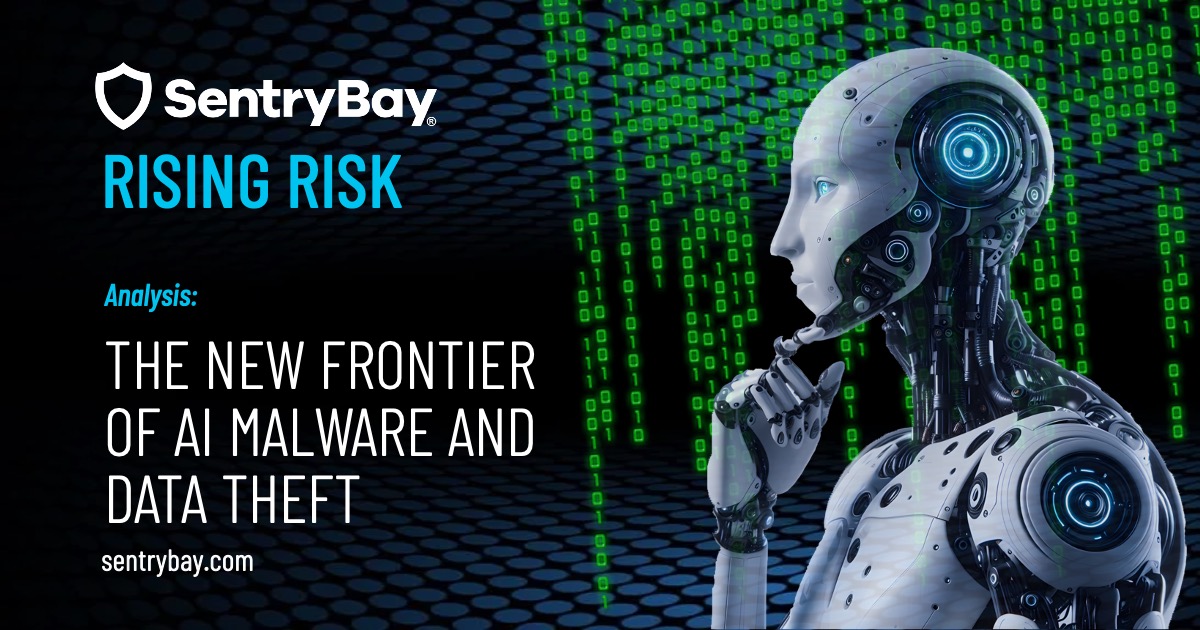
In the past, data breaches nearly always meant exfiltration of files, credential dumps, or network backdoors. Today, the frontier has shifted. AI Malware now takes what you see – not just what you store. Threat actors use intelligent screen capture, virtual meeting video capture, and OCR-driven extraction to convert what’s visible into structured intelligence.
This shift from file-centric attacks to screen-centric assaults is not just incremental: it changes the game. Sensitive information that is “in use” – displayed on screen – is now fair game. And traditional security tools often miss it entirely.
How AI Malware Works in Practice
1. Silent screen capture and video recording
Modern malware can hook into legitimate system APIs or virtual desktop display paths to capture frames continuously. In virtual meetings, the malware can record video feeds, capture shared documents, or snapshot chat windows. These tools can operate in the background, evading detection.
2. OCR + AI to turn images into data
Once a screenshot is taken, embedded AI modules perform optical character recognition (OCR). Text, numbers, table entries, even partially visible fields are parsed. That raw data is then transformed into JSON or structured payloads. The attacker no longer needs to dig deep—they get machine-readable intelligence from visuals. This is a core trait of today’s AI Malware.
3. Real-time exfiltration
Rather than bulk file dumps, the data is leaked in near real time. Screenshots or JSON payloads hijack existing network channels or send data over covert C2 links. Since the content looks “normal,” evasion is easier.
4. Adaptive targeting
Because AI is embedded, these tools can adapt. They may prioritize windows that contain credentials, dashboards, or medical records. Over time, they hone in on the highest-value content.
Why This Matters for Virtual Meeting Environments
Doctors in telehealth sessions may display patient charts, prescriptions, lab results. AI Malware can snapshot that, extract personal health information (PHI), and leak it. Healthcare breaches carry steep fines and reputational risk.
Military or defense users rely on closed conference systems to share plans or classified documents. One snapshot gives threat actors a window they never would have had via network egress.
Banks, insurers, and financial advisors regularly conduct meetings with clients. Inside, account numbers, balances, investment strategies – all can be exposed. Traditional endpoint defenses may miss these intermediate visual flows.
In each of these domains, the attacker’s path is simple: compromise the endpoint, then watch what users are already doing. No file exfiltration, no huge footprints – just subtle visual capture.
Why Most Defenses Fail Against AI Malware
- File-based defenses miss screen capture
Antivirus and anti-malware tools primarily monitor file I/O, process signatures, or network anomalies. But screen capture reads visual output, not files. - Encryption doesn’t help
Even encrypted file systems don’t stop malware capturing decrypted content when it’s displayed. - User interface tools are blind
Some security tools attempt to detect window overlays or full-screen hooks – but intelligent AI Malware may avoid these or mimic benign behavior. - Steganography and blending
Attackers embed capture logic in otherwise innocuous components, evading signature detection. - In-memory and obfuscation tactics
These tools often live in memory, use code injection, or obfuscate themselves, making detection harder.
Real-World Signals That AI Malware Is Growing
- Infostealer campaigns already incorporate screenshot modules.
- Advanced commands like “TOGGLE_INTERN,” “GENERATE_WINDOW_LOCKED” appear in some malware families to capture desktop windows.
- Threat actors are using fake AI tools as lures to install malware.
- Research efforts use LLMs to reverse engineer screenshot logs and map infection vectors.
Taken together, these signals show that AI Malware is becoming a primary vector, not a fringe experiment.
Strategic Imperatives for Organizations
- Assume endpoints are compromised at some level
The best posture is “zero trust at screen.” Do not trust that just because no file was stolen, nothing was observed. - Protect what is displayed, not just what is stored
Implement controls that render sensitive screen data unreadable to malware, or block unauthorized screen capture altogether. - Monitor for suspicious visual data flows
Look for unrecognized processes hooking display APIs or anomalous screen read commands. - Segment and isolate high-risk sessions
Use hardened virtual desktops for sensitive meetings, with limited local rendering capabilities. - Educate users
Make meeting participants aware of exposure risks: avoid showing private notes, minimize sensitive dashboards while screens are shared. - Adopt tools built for AI Malware defense
You need solutions designed to neutralize screen capture, deny OCR readability, and break extraction tools.
How SentryBay’s Approach Mitigates AI Malware Threats
SentryBay has engineered its Armored Client to combat exactly this class of attack. Its protections include:
- System-level blackout of unauthorized screen capture, rendering visual data unreadable to OCR engines.
- Keystroke randomizing before they reach APIs, neutralizing keyloggers.
- Blockage of visual data theft across all applications – local, virtual desktop, browser, remote sessions.
- Compatibility with IGEL OS, Azure Virtual Desktop, Windows 365 and VDI setups.
In short, SentryBay addresses the new blind spot in cybersecurity: AI Malware that steals what you see, not what you store.
If your organization handles virtual meetings, client conversations, medical consultations, or classified sessions, you need defense beyond file tools. AI Malware is real. Defend what’s visible – before attackers see it.



